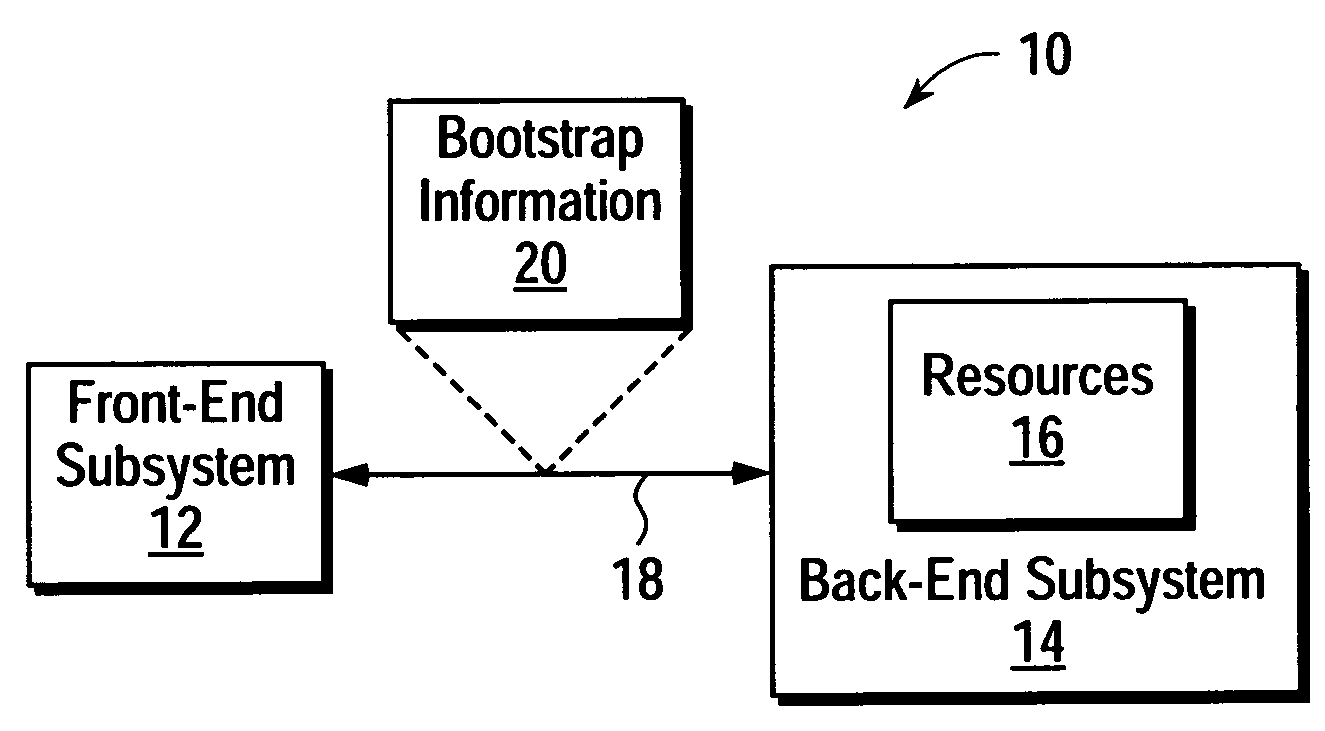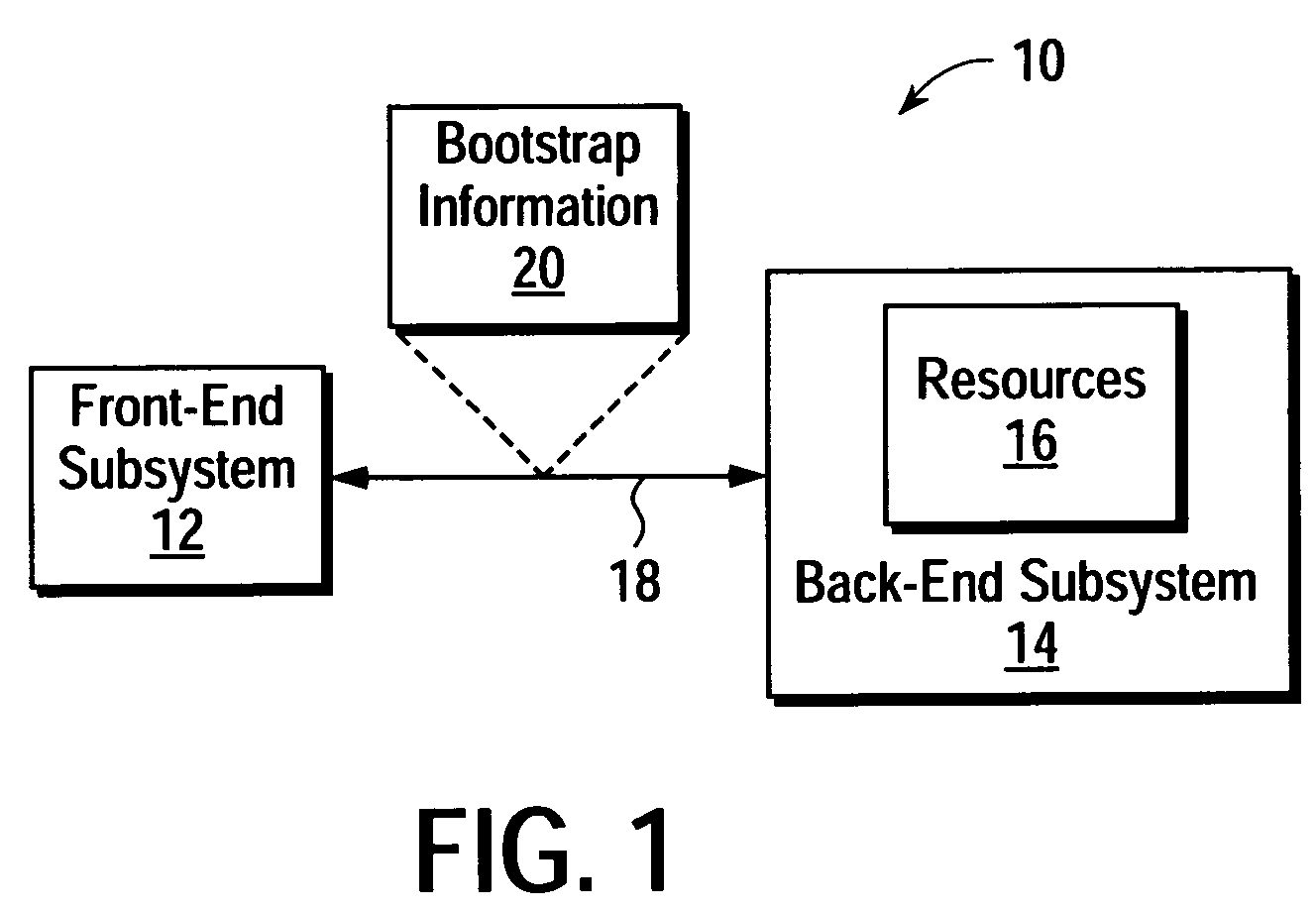Configurable measurement interface coupled to a front-end subsystem and a back-end subsystem for receiving a set of bootstrap information
a technology of a measurement interface and a back-end subsystem, which is applied in the direction of program control, instruments, error detection/correction, etc., can solve the problems of limiting the ability of designers to add more elaborate measurement functionality to a measurement device, imposing a significant increase in the complexity of the front-end subsystem of the measurement device, and limiting the ability to add more elaborate measurement functionality. , to achieve the effect of increasing the complexity
- Summary
- Abstract
- Description
- Claims
- Application Information
AI Technical Summary
Benefits of technology
Problems solved by technology
Method used
Image
Examples
Embodiment Construction
[0014]FIG. 1 shows a measurement device 10 that incorporates the present techniques. The measurement device 10 includes a front-end subsystem 12 and a back-end subsystem 14. The front-end and back-end subsystems 12-14 are interconnected via a measurement interface 18. The front-end subsystem 12 includes mechanisms for performing interactions with a physical environment and the back-end subsystem 14 includes a set of resources 16 for supporting the front-end subsystem 12. The front-end subsystem 12 dynamically configures the support functions of the resources 16 by transferring a set of bootstrap information 20 to the back-end subsystem 14 via the measurement interface 18.
[0015]The front-end subsystem 12 may use the bootstrap information 20 to adapt the functions performed by the resources 16 in the back-end subsystem 14 to the needs a particular application performed in the front-end subsystem 12. Examples of a functions that may be performed by the resources 16 and configured using...
PUM
 Login to View More
Login to View More Abstract
Description
Claims
Application Information
 Login to View More
Login to View More - Generate Ideas
- Intellectual Property
- Life Sciences
- Materials
- Tech Scout
- Unparalleled Data Quality
- Higher Quality Content
- 60% Fewer Hallucinations
Browse by: Latest US Patents, China's latest patents, Technical Efficacy Thesaurus, Application Domain, Technology Topic, Popular Technical Reports.
© 2025 PatSnap. All rights reserved.Legal|Privacy policy|Modern Slavery Act Transparency Statement|Sitemap|About US| Contact US: help@patsnap.com



